Post Independence History-IV | History Optional for UPSC PDF Download
ACHIEVEMENTS OF INDIANS IN SCIENCE & TECHNOLOGY
| Introduction |
- Indians have played an important role in the field of science and technology. The Indus Valley Civilization, Vedic age and later periods saw great achievements by Indians in the field of Science and technology.
- In modern times many Indian scientists and mathematicians have done phenomenal work and some of them even received awards like Nobel Prize for their contributions to science in technology.
- India belongs to the select group of countries that have developed indigenous nuclear technology. India is among the few countries which have developed ballistic missiles. In the field of space science, India has the capability to launch GSLV satellites.
| Achievements of Indians in Science and Technology in Ancient and medieval India |
Baudhayana (800 BCE)
- Baudhayana was a mathematician who lived in ancient India around 800 BCE. His major contributions include:
- He is considered the earliest author of Sulbasutras which was used for the accurate construction of altars needed for Vedic sacrifices.
- He gave a near accurate value of Pi(π).
- He gave the theorem today known as “Pythagoras theorem” before Pythagoras had developed it.
- He also gave a near accurate value of the square root of 2 (577/408) which is correct to 5 decimal places.
Kanada Sage
- Kanada, a philosopher estimated to have lived in India between the 6th century to 2nd century BCE. His name Kanada means atom eater.
- He was the first person to give the atomic theory. He gave the idea that Parmanu (Atom) was an indestructible particle of matter which cannot be divided further. Later on, Dalton made similar observations in Dalton's atomic theory.
Charaka (300 BCE)
- Charaka is considered the “Father of Indian Medicine” who lived in around 300 BCE in India. His major contributions include:
- He was among the principal contributors to the ancient system of medicine ‘Ayurveda’ and wrote his medical treatise the ‘Charak Samhita’.
- He is known for his works on metabolism and the fundamentals of genetics.
- He wrote about three doshas which the body contains i.e. Vata (movement), Pitta (transformation) and Cough (lubrication and stability). Diseases occur when the balance among these three doshas gets disturbed.
Sushruta
- Sushruta was the author of “Sushruta Samhita” an ancient Sanskrit text on medicine and surgery.
- Sushruta invented surgical instruments and worked on the dissection of dead bodies.
- Sushruta was aware of cataract operations.
- He is also known as the “father of surgery” and “father of plastic surgery”.
Aryabhatta (476- 550 CE)
- Aryabhatta also was known as Aryabhatta 1 was the first major astronomer and mathematician from the classical age of Indian astronomy and Indian mathematics.
- His major works include Aryabhatiya and Arya-Siddhanta.
- He calculated the orbits of planets, and scientifically explained the Solar and lunar eclipses.
- He calculated the distance between Earth and Moon. He proposed that Earth rotates on its axis.
- He gave the theory that the apparent motion of stars is due to the movement of Earth.
- He calculated the circumference of the earth and proposed that the shape of Earth is not flat.
- He worked on the place value system and zero as a symbol and concept.
Varahamihira (505- 587 CE)
- Varahamihira was born in the Avanthi region during the Gupta rule.
- He wrote the Pancha-siddhantika which summarises 5 alias astronomical treatises namely the Surya Siddhanta, Romaka Siddhanta, Paulisa Siddhanta, Vashishtha Siddhant and Paitamaha Siddhanta.
- He gave trigonometric formulas and improved the accuracy of sine tables of Aryabhatta.
- He explained the shifting of equinoxes and the nature of the scattering of light.
- He was also the author of Brihat Samhita and Brihat Jataka.
- He gave theories on earthquakes and explained that how the termites may indicate water underground.
Brahmagupta (598 – 670 CE)
- Brahmagupta was an Indian mathematician and astronomer. He was the first person to give rules to compute with zero.
- He was the author of the “Brāhmasphuṭasiddhānta”, a theoretical treatise on mathematics and astronomy, and the “Khaṇḍakhādyaka”, which was a more practical text.
- He worked on mathematics and astronomy and he is supposed to have invented many astronomical instruments for his observations.
- He explained that the shape of the earth is spherical and worked on the calculation of eclipses.
- He worked on methods for calculating the distance of the heavenly bodies.
Bhaskara 1 (600 – 680 CE)
- He was a mathematician who first wrote numbers in the Hindu decimal system with a circle for zero.
- he was the follower of the Aryabhatta School of astronomy and was the author of “Mahābhāskarīya” and the “Laghubhāskarīya”.
- He worked on many trigonometric formulas and give a rational approximation of sine function.
Bhaskaracharya or Bhaskara II (1114- 1185)
- Bhaskaracharya was an Indian mathematician and astronomer born in Bijapur in Karnataka.
- His main work includes “Siddhanta Shiromani” which has four sections dealing with Arithmetics, Algebra, Mathematics of planets, and Spheres.
- He worked on differential calculus and algebra.
| Nobel Laureates of India in Science |
C.V. Raman:
- C.V. Raman was one of the most famous scientists in India. Raman’s academic brilliance was established at a very young age. He had a pioneering work on scattering of light, C.V. Raman won the Nobel Prize for Physics in 1930.
- He was the first Asian and first non-White to receive any Nobel Prize in the sciences. Raman also worked on the acoustics of musical instruments. He was the first to investigate the harmonic nature of the sound of the Indian drums such as the tabla and the mridangam.
- He discovered that, when light traverses a transparent material, some of the deflected light changes in wavelength. This phenomenon is now called the Raman scattering and is the result of the Raman Effect.
Raman effect, change in the wavelength of light that occurs when a light beam is deflected by molecules. When a beam of light traverses a dust-free, transparent sample of a chemical compound, a small fraction of the light emerges in directions other than that of the incident (incoming) beam. Most of this scattered light is of unchanged wavelength. A small part, however, has wavelengths different from that of the incident light; its presence is a result of the Raman effect. |

Har Gobind Khorana:
- Har Gobind Khorana was an American molecular biologist of Indian origin. He was awarded the Nobel Prize in the year 1968 for his work on the interpretation of the genetic code and its function in protein synthesis.
- Dr Khorana demonstrated how the genetic code determines all life processes by directing the synthesis of all cell proteins finally unravelled the secret of the DNA code of life.
- Dr Khorana received numerous awards and honours such as the Novel Prize for his achievement. Distinguished Service Award, Watumull Foundation, Honolulu, Hawaii, American academy of achievement awards, Philadelphia, Pennsylvania, Padma Vibhushan, Presidential Award, J C Bose Medal and Willard Gibbs medal of the Chicago section of American Chemical Society.
- He was also elected a member of the National Academy of Sciences, Washington, as well as a Fellow of the American Association for the Advancement of Science. In 1971, he became a foreign member of the USSR Academy of Sciences and in 1974, an Honorary Fellow of the Indian Chemical Society.
| In the 1960s Khorana confirmed Nirenberg’s findings that the way the four different types of nucleotides are arranged on the spiral “staircase” of the DNA molecule determines the chemical composition and function of a new cell. The 64 possible combinations of the nucleotides are read off along a strand of DNA as required to produce the desired amino acids, which are the building blocks of proteins. Khorana added details about which serial combinations of nucleotides from which specific amino acids. He also proved that the nucleotide code is always transmitted to the cell in groups of three, called codons. Khorana also determined that some of the codons prompt the cell to start or stop the manufacture of proteins. |
Subrahmanyan Chandrasekhar:
- He was one of the greatest scientists of the 20th century. He did commendable work in astrophysics, physics and applied mathematics.
- Chandrasekhar has bestowed the Nobel Prize in Physics in 1983 Physics for his mathematical theory of black holes. The Chandrasekhar limit is named after him.
- He was the nephew of CV Raman. Chandra became a United States citizen in 1953. Chandra was a popular teacher who guided over fifty students to their PhD including some who went on to win the Nobel Prize themselves.
- His research explored nearly all branches of theoretical astrophysics and he published ten books, each covering a different topic, including one on the relationship between art and science.
- His most famous work concerns the radiation of energy from stars, particularly white dwarf stars, which are the dying fragments of stars.
| By the early 1930s, scientists had concluded that, after converting all of their hydrogen to helium, stars lose energy and contract under the influence of their own gravity. These stars, known as white dwarf stars, contract to about the size of Earth, and the electrons and nuclei of their constituent atoms are compressed to a state of extremely high density. Chandrasekhar determined what is known as the Chandrasekhar limit—that a star having a mass more than 1.44 times that of the Sun does not form a white dwarf but instead continues to collapse, blows off its gaseous envelope in a supernova explosion, and becomes a neutron star. An even more massive star continues to collapse and becomes a black hole. These calculations contributed to the eventual understanding of supernovas, neutron stars, and black holes. Chandrasekhar came up with the idea for a limit on his voyage to England in 1930. However, his ideas met strong opposition, particularly from English astronomer Arthur Eddington, and took years to be generally accepted. |
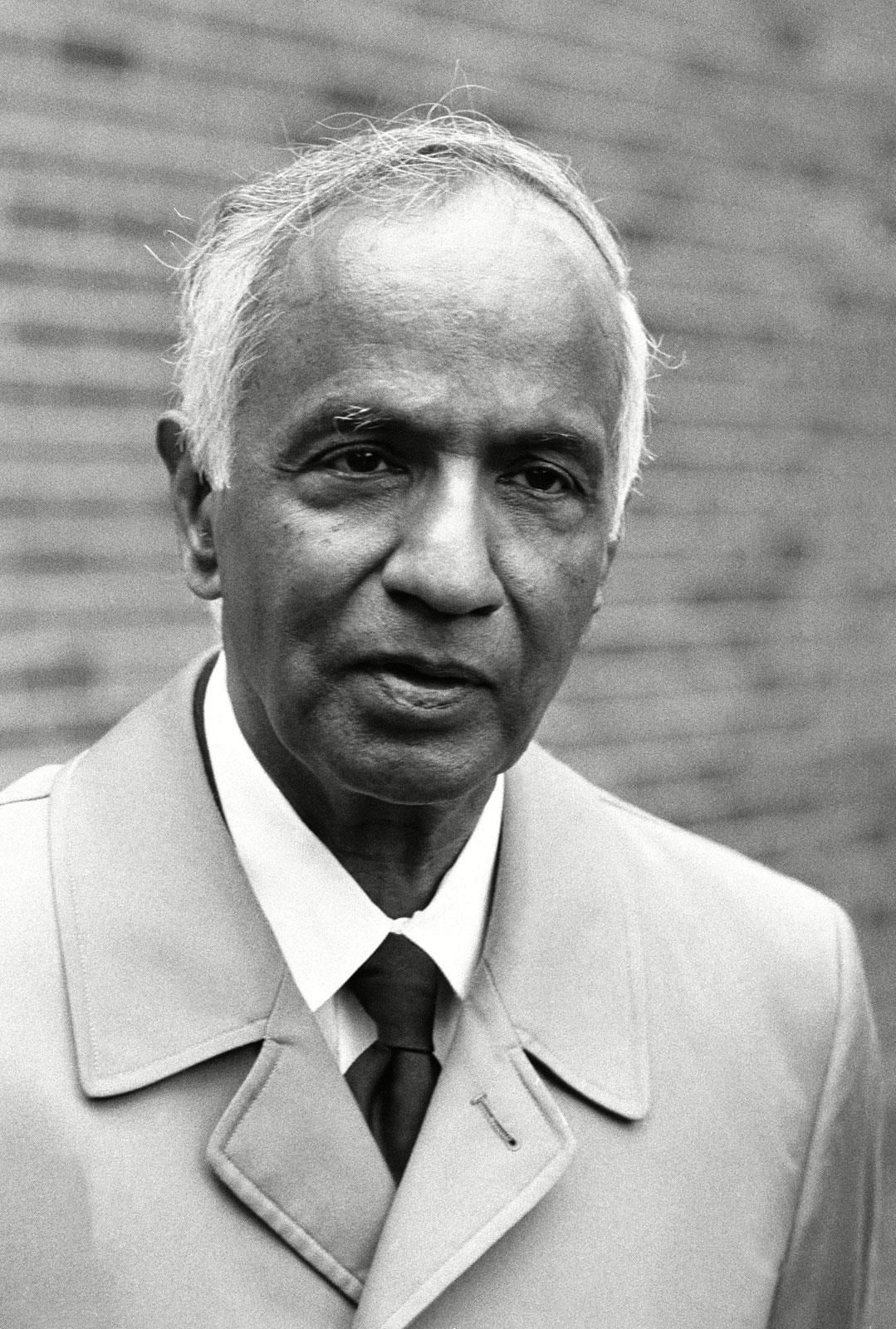
Venkataraman Ramakrishnan:
- Venkataraman, Indian born American is a senior scientist in the Structural Division at the Medical Research Council Laboratory of Molecular Biology, in Cambridge, England.
- He has worked in various fields of biology during the earlier part of his career. He is internationally recognized for the determination of the atomic structure of the 30s ribosomal subunit.
- Ramakrishnan received numerous awards such as he was elected a Member of the European Molecular Biology Organization (EMBO) in 2002 and a Fellow of the Royal Society (FRS) in 2003.
- He was chosen a Member of the U.S. National Academy of Sciences in 2004. In 2007, Ramakrishnan has bestowed the Louis-Jeantet Prize for Medicine and the Datta Lectureship and Medal of the Federation of European Biochemical Societies (FEBS).
- In 2008, he won the Heatley Medal of the British Biochemical Society. Since 2008, he is a Fellow of Trinity College, Cambridge and a Foreign Fellow of the Indian National Science Academy.
- In 2009, Ramakrishnan was honoured with the Nobel Prize in Chemistry along with Thomas A. Steitz and Ada Yonath. He received India's second-highest civilian honour, the Padma Vibhushan, in 2010.
- Ramakrishnan was knighted in the 2012 New Year Honours for services to Molecular Biology. In the same year, he was awarded the Sir Hans Krebs Medal by the FEBS. In 2013, he won the Spanish Jiménez-Diáz Prize.
| Awarded the 2009 Nobel Prize for Chemistry, along with American biophysicist and biochemist Thomas Steitz and Israeli protein crystallographer Ada Yonath, for his research into the atomic structure and function of cellular particles called ribosomes. (Ribosomes are tiny particles made up of RNA and proteins that specialize in protein synthesis and are found free or bound to the endoplasmic reticulum within cells.) |

| Achievements of Indians in Science & Technology in the modern era |
Prafulla Chandra Ray:
- He was a Famous academician and chemist, known for being the founder of Bengal Chemicals & Pharmaceuticals, India’s first pharmaceutical company. In 1889, Prafulla Chandra was chosen as an Assistant Professor of Chemistry in the Presidency College, Kolkata.
- His publications on miraculous nitrite and its derivatives brought him recognition from all over the world. His role as a teacher was significant as he inspired young generation chemists in India to build up an Indian school of chemistry.
- Famous Indian scientists like Meghnad Saha and Shanti Swarup Bhatnagar were among his students. Prafulla Chandra had contributed to developing industries in India.
- He set up the first chemical factory in India, with very minimal resources, working from his home. In 1901, this pioneering effort resulted in the formation of Bengal Chemical and Pharmaceutical Works Ltd.
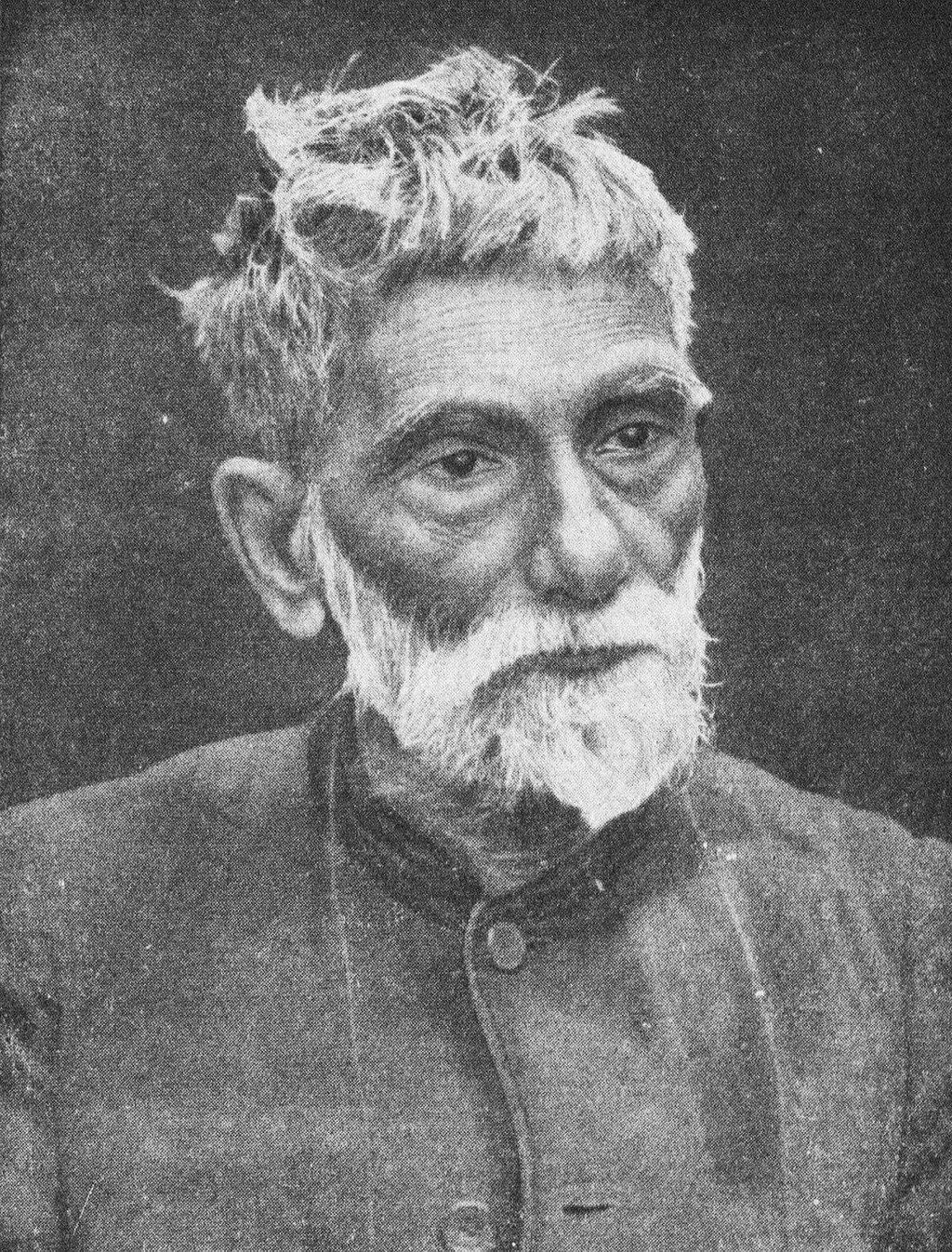
Sir Mokshagundam Visvesvaraya:
- He was a notable Indian engineer, scholar, statesman and the Diwan of Mysore from 1912 to 1918. Sir M. Visvesvaraya was one of the most eminent engineers of India.
- He maintained high principles and discipline in his life. He was best known for his contribution as the chief architect behind the construction of the Krishna Raja Sagara dam in Mandya which helped to convert the surrounding barren lands into fertile grounds for farming.
- Visvesvaraya was knighted as the Commander of the Order of the Indian Empire (KCIE) by the British for his contributions to society in 1915.
- He was a recipient of the Indian Republic’s highest honour, the Bharat Ratna for his persistent work in the fields of engineering and education. He was also awarded several honorary doctoral degrees from eight universities in India.
- Sir M V suggested that India try to be at par with industrialized nations as he believed that India can become developed through industries.
- He has the credit of inventing ‘automatic sluice gates’ and ‘block irrigation systems’ which are still considered to be marvels in engineering. Each year, his birthday 15 September is celebrated as Engineer’s Day in India.
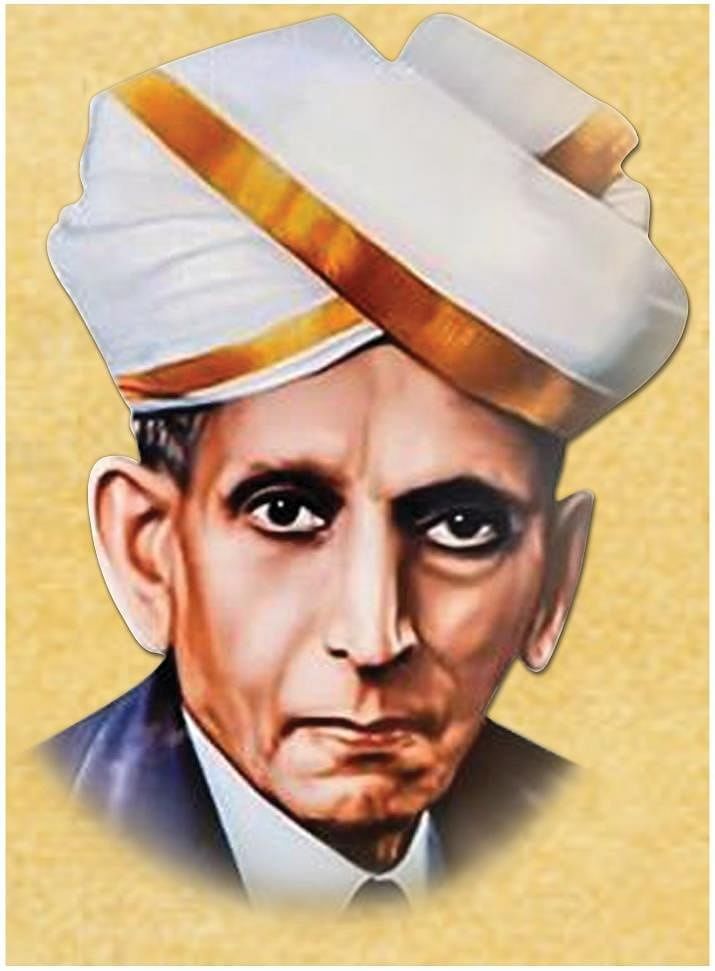
Jagdish Chandra Bose:
- Jagdish Chandra Bose was an eminent scientist. He developed the use of galena crystals for making receivers, both for short-wavelength radio waves and for white and ultraviolet light.
- In 1895, two years before Marconi’s demonstration, Bose demonstrated wireless communication using radio waves, using them to ring a bell remotely and to explode some gunpowder.
- He invented many of the microwave components such as waveguides, horn antennas, polarizers, dielectric lenses and prisms, and even semiconductor detectors of electromagnetic radiation in the last decade of the nineteenth century.
- He also proposed the existence of electromagnetic radiation from the Sun, which was confirmed in 1944. After that Bose focused his attention on response phenomena in plants.
- He presented that not only animal but vegetable tissues produce similar electric responses under different kinds of stimuli – mechanical, thermal, electrical and chemical.
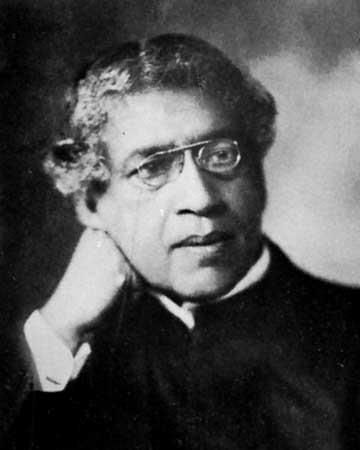
Meghnad Saha:
- Meghnad Saha belonged to the District of Dacca, now in Bangladesh. In 1920, Meghnad Saha had developed himself as renowned physicists of the time.
- Meghnad Saha has contributed in the arena of the thermal ionisation of elements, and it led him to formulate what is known as the Saha Equation.
- This equation is one of the basic tools for the interpretation of the spectra of stars in astrophysics. His theory of high-temperature ionization of elements and its application to stellar atmospheres, as expressed by the Saha equation, is fundamental to modern astrophysics; subsequent development of his ideas has led to increased knowledge of the pressure and temperature distributions of stellar atmospheres.
- By studying the spectra of various stars, one can find their temperature and that, using Saha’s equation, determine the ionisation state of the various elements making up the star. He also invented an instrument to measure the weight and pressure of solar rays.
- He was also the chief architect of river planning in India. He prepared the original plan for the Damodar Valley Project. He had a great role in the development of scientific institutions throughout India as well as in national economic planning involving technology.
Satyendra Nath Bose:
- Satyendra Nath Bose was an outstanding Indian physicist specialising in quantum mechanics. He is of course most remembered for his excellent role played in the class of particles ‘bosons‘, which were named after him by Paul Dirac to commemorate his work in the field.
- Basically, he is known for his work in Quantum Physics. He is famous for “Bose-Einstein Theory” and a kind of particle in an atom has been named after his name Boson.
- Bose adapted a lecture at the University of Dhaka on the theory of radiation and the ultraviolet catastrophe into a short article called “Planck’s Law and the Hypothesis of Light Quanta” and sent it to Albert Einstein.
- Einstein agreed with him, translated Bose’s paper “Planck’s Law and Hypothesis of Light Quanta” into German, and had it published in Zeitschrift für Physik under Bose’s name, in 1924.
- This formed the basis of the Bose-Einstein Statistics. In 1937, Rabindranath Tagore dedicated his only book on science, Visva–Parichay, to Satyendra Nath Bose. The Government of India awarded him India’s second-highest civilian award, the Padma Vibhushan in 1954.
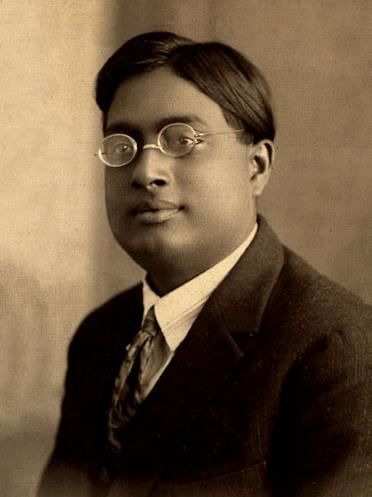
Srinivasa Ramanujan:
- Srinivasa Ramanujan was a mathematician. He is extensively believed to be the greatest mathematician of the 20th Century. Srinivasa Ramanujan made a major contribution to the analytical theory of numbers and worked on elliptic functions, continued fractions, and infinite series. His published and unpublished works have kept some of the best mathematical brains in the world.
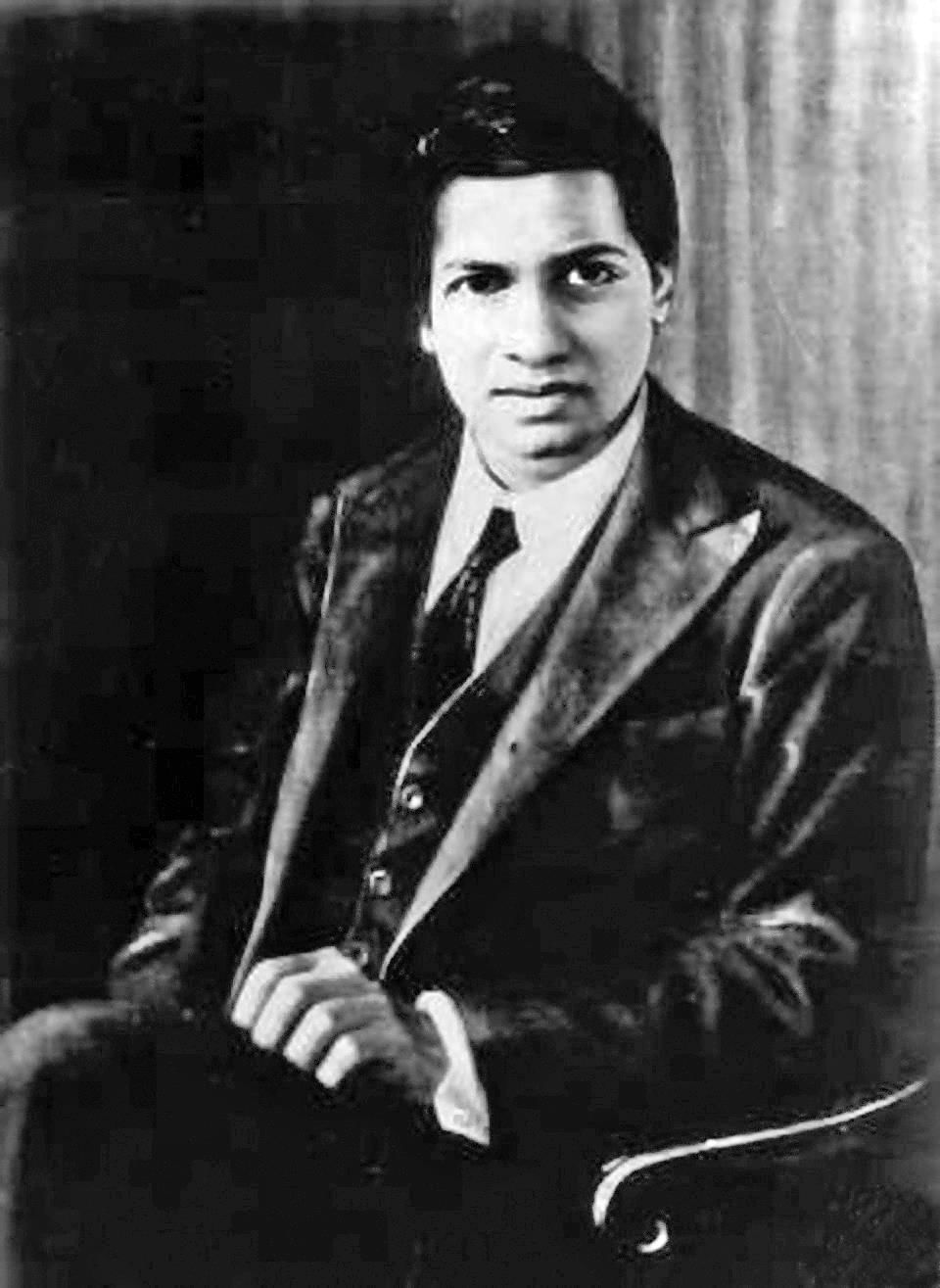
Vikram Sarabhai:
- Vikram Sarabhai was among the distinguished scientists of India. He is considered the Father of the Indian space program. India’s first satellite Aryabhata launched in 1975, was one of the many projects planned by him.
- Like Bhabha, Sarabhai wanted the practical application of science to reach the common man. Therefore he saw a golden opportunity to harness space science to the development of the country in the fields of communication, meteorology, remote sensing and education.
- The Satellite Instructional Television Experiment (SITE) launched in 1975-76, brought education to five million people in 2,400 Indian villages.
- In 1965, he established the Community Science Centre in Ahmedabad to popularise science among children. His profound cultural interests led him, along with his wife Mrinalini Sarabhai, to establish Darpana Academy, an institution devoted to performing arts and propagation of the ancient culture of India.
- Besides scientist, he had a combined quality as an innovator, industrialist and visionary. He was awarded the Bhatnagar Memorial Award for Physics in 1962, the Padma Bhushan in 1966, and was subsequently awarded the Padma Vibhushan.
- He was the Chairman of the Atomic Energy Commission in 1966, Vice-President and Chairman of the UN Conference on peaceful uses of outer space in 1968, and President of the 14th General Conference of the International Atomic Energy Agency.
- The International Astronomical Union named a crater in the moon (in the Sea of Serenity) after him, in honour of his marvellous role in science.

Dr Homi Jehangir Bhabha:
- He is considered the originator of the Indian Nuclear Research Programme. India accomplished nuclear capability due to the extreme efforts of Homi, thereby avoiding certain conflicts simply through non-aggression treaties. This contribution of Bhabha augments the status of India on the world stage.
- He had a brilliant persona with multi-faceted qualities. He was fond of music, painting and writing. Some of his paintings are displayed in the British Art Galleries and the TIFR art collection today is rated as one of the best collections of contemporary Indian art in the country.
- He is the recipient of Adam’s Award, Padma Bhushan, an Honorary Fellow of the American Academy of Arts and Sciences and Foreign Associate of the National Academy of Sciences in the United States.
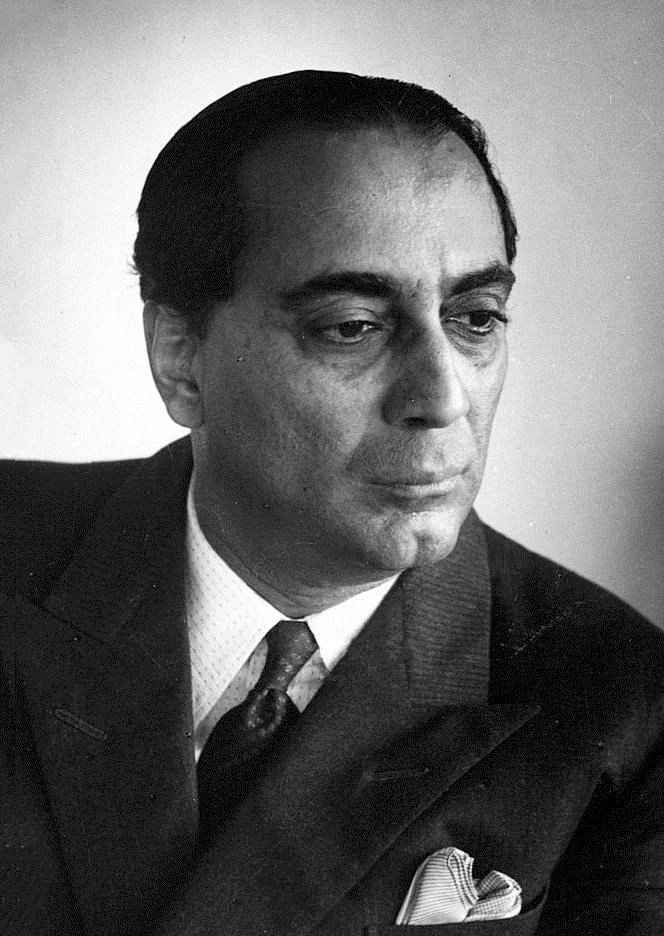
APJ Abdul Kalam:
- Dr APJ Abdul Kalam is remembered as a great scientist, an inspirational leader and an extraordinary human being. As a scientist, Kalam made an effort to develop the Polar SLV and SLV-III projects between the 1970s and 1990s. Both of which proved to be a success.
- In the 1970s, Kalam also directed two projects, namely, Project Devil and Project Valiant, which sought to develop ballistic missiles from the technology of the successful SLV programme.
- Despite the disapproval of the Union Cabinet, Prime Minister Indira Gandhi allotted secret funds for these aerospace projects through her discretionary powers under Kalam's directorship.
- Kalam played a vital role in convincing the Union Cabinet to conceal the true nature of these classified aerospace projects. His research and educational leadership brought him great laurels and prestige in the 1980s, which prompted the government to initiate an advanced missile program under his directorship.
- Besides a distinguished scientist and engineer, Dr APJ Abdul Kalam served as the 11th President of India from the period 2002 to 2007.
- After post-presidency, Kalam became a visiting professor at the Indian Institute of Management Shillong, the Indian Institute of Management Ahmedabad, and the Indian Institute of Management Indore; an honorary fellow of Indian Institute of Science, Bangalore, chancellor of the Indian Institute of Space Science and Technology Thiruvananthapuram; professor of Aerospace Engineering at Anna University; and an adjunct at many other academic and research institutions across India.
- He taught information technology at the International Institute of Information Technology, Hyderabad, and technology at Banaras Hindu University and Anna University.
- He played an intensive political and technological role when the Pokhran-II nuclear tests were conducted. Kalam served as the Chief Project Coordinator, along with R. Chidambaram during the testing phase. Photos and snapshots of him taken by the media elevated Kalam as the country's top nuclear scientist.
- He had a brilliant and dominant personality and he was a man of vision, who always had novel ideas for the development of the country and is also popular as the Missile Man of India.

Dr Koti Harinarayana:
- He was a renowned genius scientist. It is recognized that the brain behind India's first indigenously built combat aircraft. Tejas, which was the name given to the aircraft, saw its first flight in 2001.
- India’s first self-made light combat aircraft was built by HAL and developed by Dr Koti.
- It was a result of the weakening value of the country's soon to be obsolete Mig-21 fighter jets and, true to its name, made our defence sector's future a lot more healthy.
- Mangalyaan, or Mars-Craft, this program by its own space research organisation has been praised as one of the most low cost but high functioning space missions to date. With this scientific development, Indians can reach Mars orbit on their first attempt.
- The brain behind the operation is actually credited to 14 scientists of ISRO.
- India's first moon probe was efficaciously inserted into the lunar orbit in 2008 and pushed India's space program into the world map, putting India side by side with NASA and the European Space Agency.
- Chandrayaan's greatest achievement was the discovery of the extensive presence of water molecules in the lunar soil.
Venkatraman Radhakrishnan:
- Venkatraman belonged to a suburb of Chennai. He was a globally distinguished space scientist and a member of the Royal Swedish Academy of Sciences.
- He was an internationally acclaimed Astrophysicist and also known for his design and fabrication of ultralight aircraft and sailboats.
- His observations and theoretical insights helped the community in unravelling many mysteries surrounding pulsars, interstellar clouds, galaxy structures and various other celestial bodies.
Anil Kakodkar:
- Dr Anil Kakodkar is famous as a distinguished nuclear scientist in India.
- He holds the post of chairman of the Atomic Energy Commission of India (AECI) as well as the Secretary to the Government of India, Department of Atomic Energy. He received Padma Shri in 1998 and Padma Bhushan in 1999.
Abhas Mitra:
- He is a distinguished Indian astrophysicist and famous for his distinct views on several front-line astrophysics concepts, particularly black holes and Big Bang Cosmology.
- His research has received extensive attention, especially in India, which is reflected by the fact that he is one of the most frequently mentioned Indian physicists on the web.
- Mitra is associated with the `Himalayan Gamma-Ray Observatory', being set up at Han Leh jointly by Tata Institute of Fundamental Research, Bhabha Atomic Research Centre and Indian Institute of Astrophysics.
- He is also an Adjunct Prof. at Homi Bhabha National Science Institute since 2010.
- Dr Mitra is also a member of the International Astronomical Union.
Abhay Vasant Ashtekar:
- He is an Indian theoretical physicist. He is the Eberly Professor of Physics and the Director of the Institute for Gravitational Physics and Geometry at Pennsylvania State University. Ashtekar created variables and he is one of the founders of loop quantum gravity and its subfield loop quantum cosmology.
Aditi Pant:
- She is an eminent Indian oceanographer. She was a part of the Indian expedition to Antarctica in 1983 and became the first Indian woman to visit Antarctica (along with Sudipta Sengupta).
- Dr Aditi was bestowed the Antarctica award with Dr Jaya Naithani and Dr Kanwal Vilku by the government of India for her excellent contributions to the Antarctic program.
Amal Kumar Raychaudhuri:
- He was a famous Indian physicist, well-known for his research in general relativity and cosmology.
- His most noteworthy contribution is the eponymous Raychaudhuri equation, which demonstrates that singularities arise inevitably in general relativity and is a key ingredient in the proofs of the Penrose-Hawking singularity theorems.
Arvind Bhatnagar:
- He made significant contributions to Solar Astronomy and founded several planetaria across India. He was the founder-director of the Udaipur Solar Observatory, and the founder-director of Nehru Planetarium of Bombay.
Arun N. Netravali:
- He is an Indian-American computer engineer accredited with significant contributions in digital technology including HDTV. He conducted seminal research in digital compression, signal processing and other fields.
- Netravali was the ninth President of Bell Laboratories and has served as Lucent's Chief Technology Officer and Chief Network Architect. Netravali was honoured with numerous awards and honorary degrees such as the IEEE Jack S.
- Kilby Signal Processing Medal in 2001 (together with Thomas S. Huang), the IEEE Frederik Philips Award in 2001, the U.S. National Medal of Technology, and the Padma Bhushan from the Government of India.
Anna Mani:
- She was popular as an Indian physicist and meteorologist. She held the position of the Deputy Director-General of the Indian Meteorological Department.
- She made great contributions in the field of meteorological instrumentation. She conducted research and published numerous papers on solar radiation, ozone and wind energy measurements.
Birbal Sahni:
- Birbal Sahni was a famous paleobotanist of India, who studied the fossils of the Indian subcontinent. Sahni is accredited for establishing the Birbal Sahni Institute of Palaeobotany at Lucknow in the state of Uttar Pradesh.
- He was a pioneer in palaeobotanical research in India and was also a geologist who took an interest in archaeology. He received several awards.
- He was elected a Fellow of the Royal Society of London (FRS) in 1936, the highest British scientific honour, becoming the first Indian botanist to be accorded this honour.
- He also received the Barclay Medal of the Royal Asiatic Society of Bengal the same year. He was honoured with the Nelson Wright Medal of the Numismatic Society of India in 1945 and Sir C. R. Reddy National Prize in 1947.
Dr. Shanti Swarup Bhatnagar:
- Dr Shanti Swaroop Bhatnagar was a notable Indian scientist. He had an interest in science and engineering during his early years of life. Shanti Swarup Bhatnagar had a great contribution along with Homi Bhabha, Prasanta Chandra Mahalanobis, Vikram Sarabhai and others to build post-independence Science & Technology infrastructure and in the formulation of India’s science policies.
Komaravolu Chandrasekharan:
- He belonged to Andhra Pradesh. He attained his M.A. in Mathematics from the Presidency College, Chennai and was a Research Scholar in the Department of Mathematics of the University of Madras during 1940-1943. In 1949, he was invited by Homi Bhabha to join the School of Mathematics of the Tata Institute of Fundamental Research.
- With his brilliant quality as an organiser and administrator of science, he transformed the fledgling School of Mathematics of TIFR into a centre of excellence respected the world over.
- He initiated a very successful programme of recruitment and training of Research Scholars at TIFR.
- The programme continues to the present day along with the same principle that he set down. He put to outstanding use his contacts with the leading mathematicians of the world, encouraging many of them to visit TIFR and deliver courses of lectures over periods of two months and more.
- The lecture notes prepared out of these lectures and published by TIFR has a great reputation in the world mathematics community to the present day. He worked in the fields of number theory and summability.
- His mathematical achievements are of a high standard, but his contribution to Indian mathematics has been even greater.
Raja Ramanna:
- Dr Raja Ramanna was a renowned physicist and nuclear scientist in India. He had a multifaceted personality and played the roles of a technologist, nuclear physicist, administrator, leader, musician, Sanskrit literature scholar, and philosophy researcher.
- His interest was in Nuclear Physics and particularly attention to Atomic Research and he became the head of the Bhabha Atomic Research Centre at Trombay, Bombay.
- Dr Ramanna held several important positions in the course of his scientific career. These included the roles of Director in Babha Atomic Research Centre, Director-General in the Defence Research and Development Program, Chairman in the Atomic Energy Commission, Vice President in Indian National Science Academy, and Director in the National Institute of Advanced Studies.
- He also played a major role in setting up the Centre for Advanced Technology at Indore and Variable Energy Cyclotron Centre at Kolkata. He was often referred to as the ‘Father of India’s nuclear program.
- Raja Ramanna received the Shanti Swarup Bhatnagar Prize for Science and Technology in 1963, Padma Vibhushan in 1975, Padma Shri in 1968 and Padma Bhushan in 1973. He was also appointed as the Union Minister of Defence in 1990. People will remember him for his incredible contribution to nuclear physics.
Ganapathi Thanikaimoni:
- Ganapathi Thanikaimoni was a successful botanist in his time. He is remembered to date for his extensive contribution to the field of palynology. His researches and projects not only helped India to make its presence felt on the world stage of botany but also promoted public relations between countries.
- Dr Ganapathi Thanikaimoni was not only involved in the study of pollen but also made efforts to contribute to the wellbeing of society.
- Thani tried his best to educate government authorities to take proper care of coastlines and to rehabilitate arid areas across India.
- It is well known that mangroves play a very important role in balancing the ecosystem; therefore Thani took steps to educate society and the government on the necessity of mangroves.
- He was also one of the instigators in the UNESCO developed 'Asia and Pacific Mangrove Project'. Ganapathi Thanikaimoni's contribution to the field of pollen studies is immense and all his contribution is recorded in the book 'Palynology Manual' that was printed after his death.
Harish-Chandra:
- Harish Chandra was a renowned Indian American mathematician and physicist who contributed fundamental work in representation theory, especially harmonic analysis on semisimple Lie groups.
- He was an eminent figure in the mathematics of the twentieth century.
- His prestigious work related to algebra, analysis, geometry, and group theory in a fundamental and epoch-making manner consequently became the foundation on which modern work in various fields, ranging from differential geometry and mathematical physics to number theory, is being performed.
- He was a member of the National Academy of Sciences of the U.S. and a Fellow of the Royal Society.
- Harish Chandra received many prestigious awards. He was honoured with the Cole Prize of the American Mathematical Society, in 1954.
- The Indian National Science Academy awarded him the Srinivasa Ramanujan Medal in 1974. In 1981, he received an honorary degree from Yale University.
- The Indian Government named the Harish-Chandra Research Institute, an institute devoted to Theoretical Physics and Mathematics.
G. N. Ramachandran:
- Gopalasamudram Narayana Iyer Ramachandran is known as the best scientist of the 20th century in India. The eminent work of G. N. Ramachandran is the Ramachandran plot, which the scientist had conceived along with Viswanathan Sasisekharan, to understand the structure of peptides.
- Ramachandran can be accredited for bringing together into the one field of molecular biophysics the then disparate fields of X-ray crystallography, peptide synthesis, NMR and other optical studies, and Physico-chemical experimentation.
- In 1970, he founded the Molecular Biophysics Unit at the Indian Institute of Science which was later known as the Centre of Advanced Study in Biophysics.
- Ramachandran was highly honoured in India and abroad for his work. In recognising his work, most agencies in India privileged themselves and conferred a new lustre on the awards they instituted.
Prasanta Chandra Mahalanobis:
- He was a renowned Indian scientist and applied statistician. He is best recalled for the Mahalanobis distance, a statistical measure. He made ground-breaking studies in anthropometry in India.
- He founded the Indian Statistical Institute and contributed to the design of large-scale sample surveys.
- He developed Economic census, population census, agricultural surveys and various other large scale and in-depth samples and surveys that have been esteemed around the globe.
- He received numerous prestigious awards that include Weldon Medal from Oxford University (1944), Fellow of the Royal Society, London (1945), President of Indian Science Congress (1950), Fellow of the Econometric Society, U.S.A. (1951), Fellow of the Pakistan Statistical Association (1952), Honorary Fellow of the Royal Statistical Society, U.K. (1954), Sir Deviprasad Sarvadhikari Gold Medal (1957), Foreign Member of the Soviet Academy of Sciences (1958), Honorary Fellow of King's College, Cambridge (1959), Fellow of the American Statistical Association (1961), Durgaprasad Khaitan Gold Medal (1961), Padma Vibhushan (1968), Srinivasa Ramanujam Gold Medal (1968).
- Mahalanobis became the Honorary President of the International Statistical Institute in 1957 and was elected a Fellow of the American Statistical Association in 1961.
Kotcherlakota Rangadhama Rao:
- Kotcherlakota Rangadhama Rao was a popular physicist of the 20th century in India. His work in spectroscopy led to the development of Nuclear Quadrupole Resonance in Physics.
- Kotcherlakota Rangadhama Rao is also famous for his long association with the Andhra University in which he served as professor of Physics.
- Prof. Rangadhama Rao was one of the foundation members for the AP Akademi of Sciences, nominated by the Government of Andhra Pradesh in 1963.
- The Indian National Science Academy frequently conducts a Memorial Lecture Award in honour of Prof. Kotcherlakota Rangadhama Rao since its inception in 1979.
Salim Ali:
- Dr Salim Ali had a passion to study birds in detail. He was popular as an Indian ornithologist and naturalist. He was referred to as “Birdman of India.
- He became the eminent figure behind the Bombay Natural History Society after 1947 and used his personal influence to reap government support for the organisation and to create the Bharatpur bird sanctuary (Keoladeo National Park) and avert the destruction of the Silent Valley National Park.
- He published a research paper discussing the nature and activities of the weaver bird in 1930. The piece made him famous and established his name in the field of ornithology.
Yellapragada Subbarao:
- He was one of the greatest biologists of all time. He discovered the function of adenosine triphosphate as an energy source in the cell and developed methotrexate for the treatment of cancer.
- Most of his career was spent in the United States. Despite A famous proverb quoted by American author, Doron K. Antrim, Yellapragada Subbarao was one of those rare people who made several significant contributions.
- Subbarao is also credited with the first synthesis of the chemical compounds folic acid and methotrexate. Though SubbaRow could not be awarded Nobel Prize, his discoveries entitled him to be called the father of targeted cancer chemotherapy.
Sam Pitroda:
- Satyanarayan Gangaram Pitroda generally popular as Sam Pitroda is an eminent figure. He is best known as a telecom engineer, inventor, entrepreneur and policymaker.
- Pitroda founded the National Innovation Council (2010), and served as the Advisor to the Prime Minister with the rank of a cabinet minister on Public Information Infrastructure and Innovation, to help democratize information.
- Pitroda had played an immense role in developing India’s foreign and domestic telecommunications policies. He is considered a well-known technical professional for the telecommunication revolution in India and specifically, the ubiquitous, yellow-signed public call offices (PCO) that quickly brought cheap and easy domestic and international public telephones all over the country.
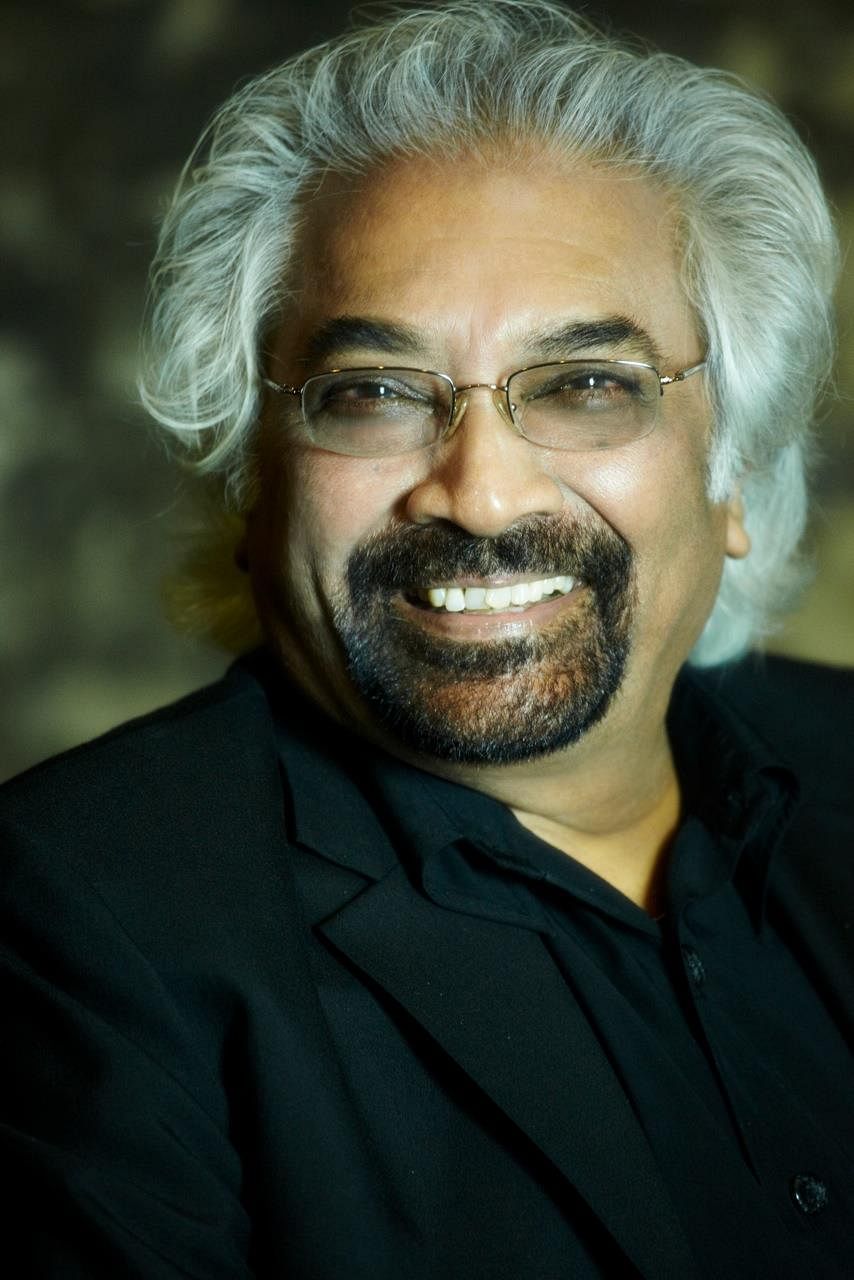
Suneet Singh Tuli:
- He is another great scientist of India who made an extraordinary contribution to enhancing the position of India. Suneet Singh became popular with his innovative product that has created a history.
- Suneet Singh Tuli as the CEO of the company launched the Aakash tablet computer which has been labelled as the world’s cheapest ever tablet computer.
- This tablet computer has been developed by a Canadian company named Datawind. He empowered students with the Aakash Tablet. With this achievement, millions of Indians are empowered with tablets to study and access the internet.
- It is the low-cost Aakash tablet that comes pre-loaded with huge amounts of educational material. It is being distributed to students all over the country at highly subsidised rates so as to give everyone an equal opportunity.
Vijay P. Bhatkar:
- Vijay Bhatkar is one of the most admired scientists and IT leaders of India. He conceptualised India's first supercomputer known as the PARAM 800 and unveiled it in 1991.
- PARAM stood for the parallel machine. Living up to its nomenclature of 'supreme', this machine, built indigenously by the Centre for Development of Advanced Computing and ranked India second after the USA in the arena of supercomputing.
- He is credited with the creation of several national institutions, notably amongst them being C-DAC, ER&DC, IIITM-K, I2IT, ETH Research Lab, MKCL and India International Multiversity. Vijay Bhatkar is a recipient of the Padma Shri and Padma Bhushan awards.
- He was also honoured with the Ramanuja Trust Award (2007), FICCI Award (1983), Petersburg Prize (2004), Priyadarshni Award (2000), National Research Development Corporation (NRDC) Award (1984–85), Gold Medal Award of Indian Geotechnical Society (1976) and Electronics Man of the Year (1992).
U.R. Rao:
- U. R. Rao is acclaimed as a space scientist. He was a former chairman of the Indian Space Research Organisation. He has developed the first satellite launched by India, Aryabhatta.
- It is the name given to the satellite which was an indigenously designed space-worthy satellite that set up tracking and transmitting systems in the orbital sphere. U.R. Rao, the chairman of ISRO at the time was the man behind the launch in 1975 that put India on the world map in terms of space research.
Subhash Mukhopadhyay:
- He is a renowned scientist born in Calcutta, India. He made a remarkable discovery in medical science.
- He gave life to India's first and the world's second IVF baby. The 3rd of October 1978 saw Subhash performing India's first In vitro fertilisation which resulted in the birth of baby Durga.
- Tragically, Subhash was only given a posthumous recognition of his achievements in 1986 as the West Bengal Government refused to support his 'unethical' methods.
Calyampudi Radhakrishna Rao:
- Calyampudi Radhakrishna Rao is an Indian-born, naturalized American, mathematician and statistician. Dr Rao is a Fellow of the Royal Society of London, and a Member of the National Academy of Sciences, U.S.A. He was awarded the Padma Vibhushan in 2001.
- The C.R. Rao Award for Statistics was instituted in his honour, to be given once in two years. In 2002, he was awarded the National Medal of Science of the U.S.A.
- He also received the Sardar Patel Lifetime Achievement Award (Sardar Ratna) of the Sardar Patel Foundation India (2015), Guy Medal in Gold (2011) of the Royal Statistical Society
Narinder Singh Kapany:
- He is credited for his contribution to science and acclaimed as a great scientist. He had invented Fibre optics.
- The process to transfer information freely and almost promptly was made possible by the original work of Narinder Kapany.
- His research and inventions have encompassed fibre-optics communications, lasers, biomedical instrumentation, solar energy and pollution monitoring.
- Fibre optics have transformed the way people communicate, offering high-speed data transfers as well as helping in medical procedures such as endoscopy and laser surgeries.
- He has a multifaceted personality.
- He also played a significant role as an entrepreneur and business executive. Dr Kapany has specialized in the processes of innovation and the management of technology and technology transfer.
- Kapany received numerous awards for his pioneering contribution in science that includes ‘The Excellence 2000 Award’ from the USA Pan-Asian American Chamber of Commerce in 1998 and the prestigious Pravasi Bharatiya Samman, which was bestowed by the Indian government and presented by former Prime Minister Atal Bihari Vajpayee in 2004.
- In addition, Kapany holds over 100 patents and was a member of the National Inventors Council.
Dr. A. Sivathanu Pillai:
- Sivathanu Pillai is an eminent Indian scientist. He supervised the conception of indigenously developed missile systems. India's self-sustaining missile developing programme is called BrahMOS.
- Dr Pillai developed the concept of the joint venture BrahMOS, which makes India one of the few countries to develop its own ballistic missiles as well as produce and supply missiles in other key areas of the world. The start of BrahMOS led to the negation of the absolute power held by Western countries.
| Achievements of Indian Scientists in Recent time |
- Manjul Bhargava:
- Manjul Bhargava is the recent addition to the growing list of modern Indian scientists who are making great contributions in the field of Mathematics. Bhargava was recently awarded the Fields medal for his contribution to number theory. In 2015, Manjul Bhargava won the Padma Bhushan, the third-highest civilian award in India.
- Shiva Ayyadurai:
- VA Shiva Ayyadurai invented the Email in 1979 as a high school student for the interoffice mail system. Later on, he also came out with EMS, which included email and other programs.
- Ashoke Sen
- Ashoke Sen is one of the few elite scientists in the world who have made original contributions to the subject of String Theory. He won the Fundamental Prize in Physics in 2012 with total prize money of $3 Million. He was later awarded the Padma Bhushan for his work in 2013.
- Abhas Mitra
- Abhas Mitra is considered the foremost authority in India on subjects of Big bang and black holes. He is also one of the most cited Indian scientists in the world.
*** The list is just a drop in the ocean of different contributions by Indians in the field of Science and technology. In recent times the development is a contribution of the team rather than individuals and will be covered in the Indigenization of technology ***
| Conclusions |
- To summarize, Indian scientists have contributed astonishingly to the growth of India. They have augmented the status of India with their scientific achievements and many of the Indian scientists have also received some prestigious international awards as well.
- The discoveries of Indian scientists have been appreciated all over the world. After independence, India has accomplished several great scientific achievements. Indian scientists have shown their courage at a global level and have made India one of the scientific centres of the world. There are many names like Bhabha, A. Sivathanu Pillai, Narinder Singh Kapany, and many more who made a prime position in the scientific field.
|
367 videos|995 docs
|
















